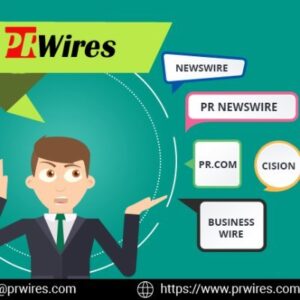Introduction
When you want to increase traffic and profit, press release example are the way to go. They're a great way to get your product noticed by people who can help you grow your business or reach an audience that's interested in what you have to say.
Introduction that isn't boring
The introduction should be written in a way that grabs the reader's attention immediately. It's important to do this because if you don't, they'll stop reading and move on to another article or blog post.
Use a hook: A hook is something interesting or intriguing that makes your reader want to know more about what you're saying (like how "a" and "b" are two separate things). This can be done by using a question in the opening paragraph (e.g., "What does this mean for me?"), an anecdote from real life experience (e.g., “I used X feature once and it changed my life"), or even quoting someone who has experienced similar results as yourself (e.g., “I've heard from many other people who have also found success with what I'm going through right now"). There are many different ways of creating hooks!
Your purpose, your hook and why you're the authority
Your purpose, hook and why you're the authority
The first step to writing a press release sample is to have a clear understanding of what you want to accomplish. You can't just write anything! If it's not going to be effective, then don't waste your time or resources on it. Once you've decided on your purpose and hook (which should be at least one sentence long), then it's time for the second step: deciding who or what is going to read this thing. That's where we come in!
The right audience
Make sure you're targeting the right audience.
Use the right keywords in your press release.
Use the right distribution channels for your press release. For example, if you're sending out a regional promotion for an event in New York City, don't send it out to all of New York and expect results; instead, target relevant publications that cater to those living within commuting distance from NYC (or within driving distance).
Optimize your media release template for search engines like Google and Bing so that people who are looking for information about your business will find it through their search engine results pages (SERPs).
Actionable content
Actionable content is the type of content that a reader can take action on. For example, if you write about how to reduce your electricity bill or how to make money from home, the reader will be able to apply those tips and start saving money or making extra income.
Why is actionable content important? Because it allows you to build trust with your readers by providing them with valuable information that they can use in their daily lives. This way, when people hear about your press release and read it thoroughly (or at all), they'll feel like they have already benefited from what you have written down because now there are tangible results showing success!
A good headline and first paragraph
The headline and first paragraph of your sample press release template should be short, punchy and attention grabbing.
The following are some examples:
A good headline will get people to click through on your website or social media pages, which means they'll see the rest of what you have to say. A bad one may have them scrolling right past it!
Your first paragraph should also grab readers' attention, but with more substance than just a question or statistic—it needs to give them an insight into who you are as an organization and why they should care about what's in this particular release (in other words: share valuable information).
The right distribution channels
Now that you have your press release written, it’s time to get it out there. The first step is choosing the best distribution channels for your event press release template.
Where will people find it? Local papers and radio stations are great places to start because they often promote community events and share information about businesses in their area. You can also post it on Facebook or Twitter or send an email blast if possible (see below).
How will they find this information? Many publications require that all submissions be submitted through their website; others may accept submissions via fax or mail only (don't worry, we'll show you how!). Make sure all inquiries come directly from organizations that want to publish a story on your company's latest news—and make sure those organizations know exactly what kind of story they want published!
How to follow up
Now that you have a press release ready to go, it's time to follow up.
Follow up with the media using their contact information (or if they don't have one, email them) and let them know that their story was published on your site. Tell them what the story is about and give them some background information about yourself or your business. Ask for an interview, if possible!
Continue following up with those who shared or downloaded your press release by sending thank-you emails after three weeks of publication (this will help build rapport). If possible, include a link where people can learn more about what you offer and how they can get involved—or even buy something directly from your website! This will also strengthen relationships and encourage future engagement from these individuals when needed later down the road.
Conclusion
We hope you’ve found these press release writing instructions helpful. We know it can be hard to get started, but if you follow these simple steps and work through them slowly, you will be well on your way to creating a professional-looking and effective piece of content that drives targeted traffic and profits!
Get in Touch!
Website – https://www.pressreleasepower.com
Skype – shalabh.mishra
Telegram – shalabhmishra
Email –contact@pressreleasepower.com
Mobile – +1 (855) 222-4111

.jpg)
.jpg)





 English (US) ·
English (US) ·